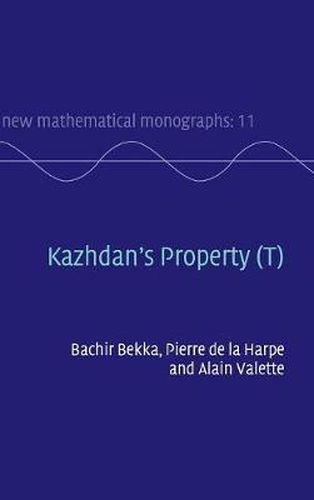Readings Newsletter
Become a Readings Member to make your shopping experience even easier.
Sign in or sign up for free!
You’re not far away from qualifying for FREE standard shipping within Australia
You’ve qualified for FREE standard shipping within Australia
The cart is loading…






Property (T) is a rigidity property for topological groups, first formulated by D. Kazhdan in the mid 1960’s with the aim of demonstrating that a large class of lattices are finitely generated. Later developments have shown that Property (T) plays an important role in an amazingly large variety of subjects, including discrete subgroups of Lie groups, ergodic theory, random walks, operator algebras, combinatorics, and theoretical computer science. This monograph offers a comprehensive introduction to the theory. It describes the two most important points of view on Property (T): the first uses a unitary group representation approach, and the second a fixed point property for affine isometric actions. Via these the authors discuss a range of important examples and applications to several domains of mathematics. A detailed appendix provides a systematic exposition of parts of the theory of group representations that are used to formulate and develop Property (T).
$9.00 standard shipping within Australia
FREE standard shipping within Australia for orders over $100.00
Express & International shipping calculated at checkout
Property (T) is a rigidity property for topological groups, first formulated by D. Kazhdan in the mid 1960’s with the aim of demonstrating that a large class of lattices are finitely generated. Later developments have shown that Property (T) plays an important role in an amazingly large variety of subjects, including discrete subgroups of Lie groups, ergodic theory, random walks, operator algebras, combinatorics, and theoretical computer science. This monograph offers a comprehensive introduction to the theory. It describes the two most important points of view on Property (T): the first uses a unitary group representation approach, and the second a fixed point property for affine isometric actions. Via these the authors discuss a range of important examples and applications to several domains of mathematics. A detailed appendix provides a systematic exposition of parts of the theory of group representations that are used to formulate and develop Property (T).